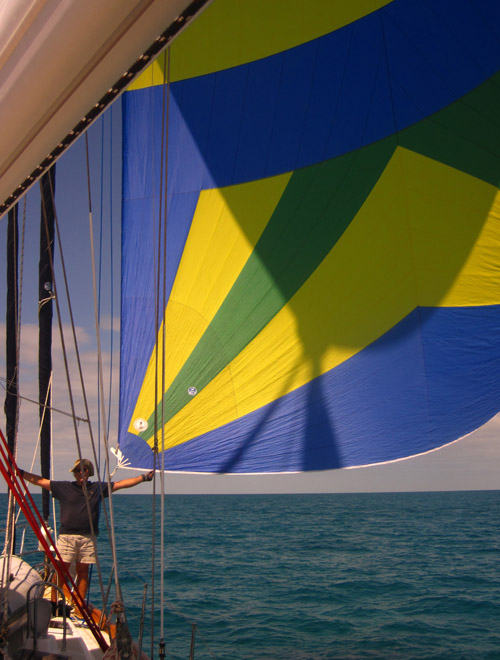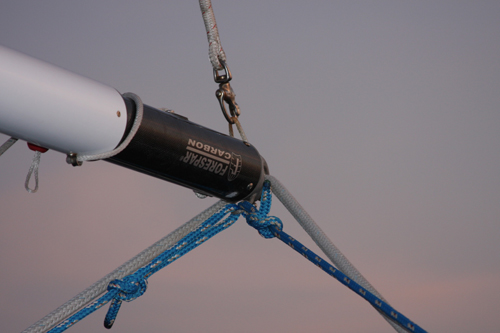
Flying the gennaker is great fun but we have to keep an eye out for increasing wind and we seldom fly it after dark.

Here’s the whisker-pole end showing the stabilizing control lines. The pole lift holds the pole up while the fore- and afterguys (blue lines) prevent fore and aft motion. The genoa sheet hangs loosely through the whisker-pole jaw waiting for you to sheet in and sail off downwind.